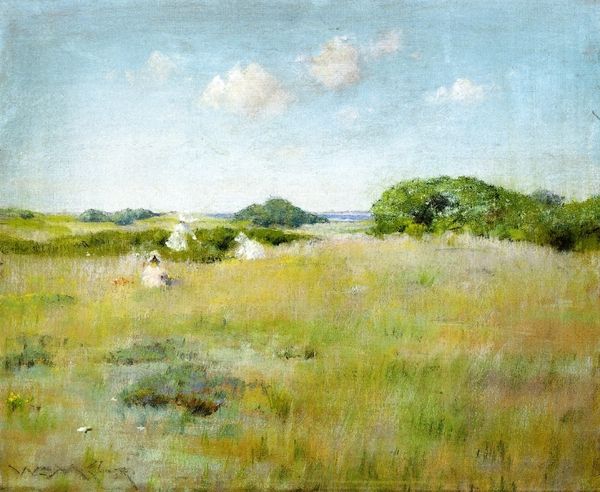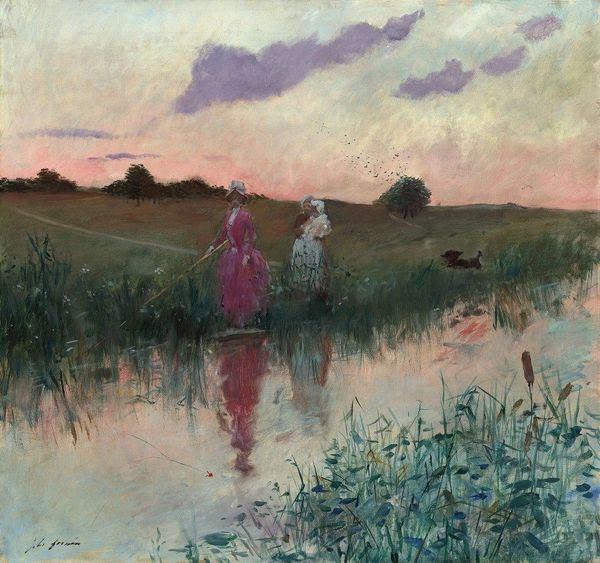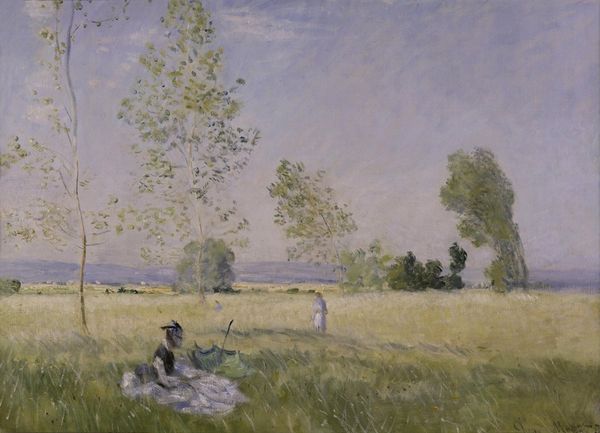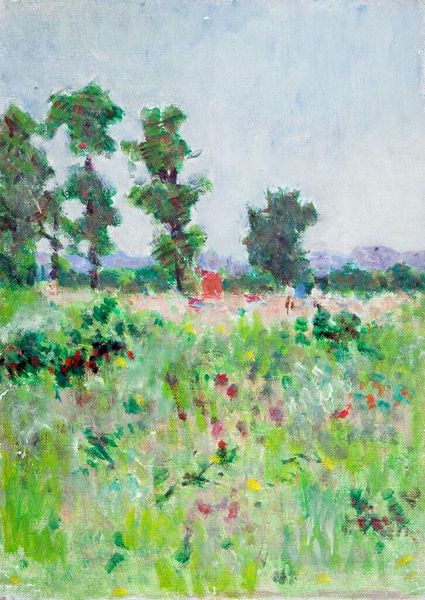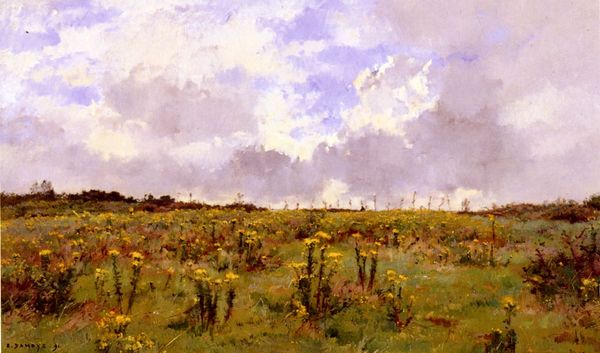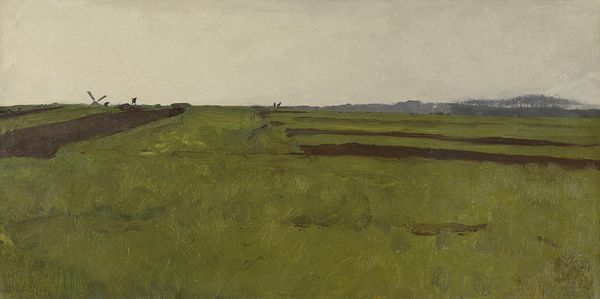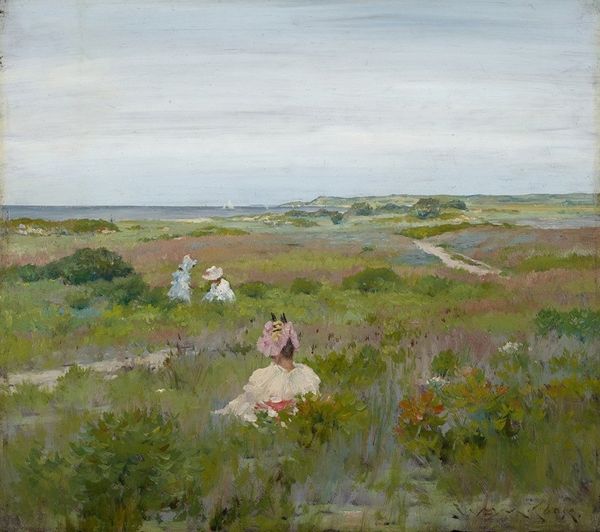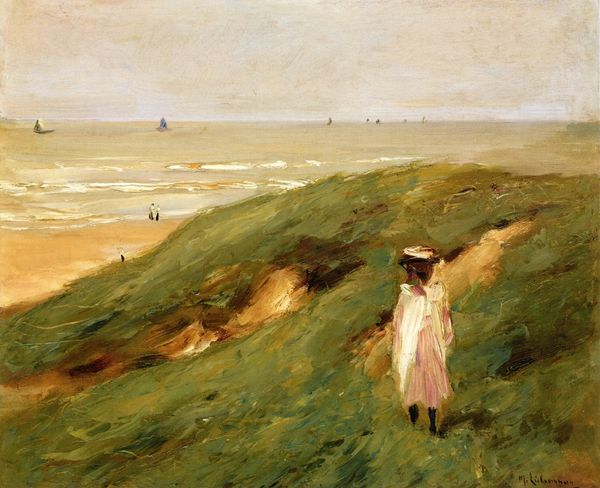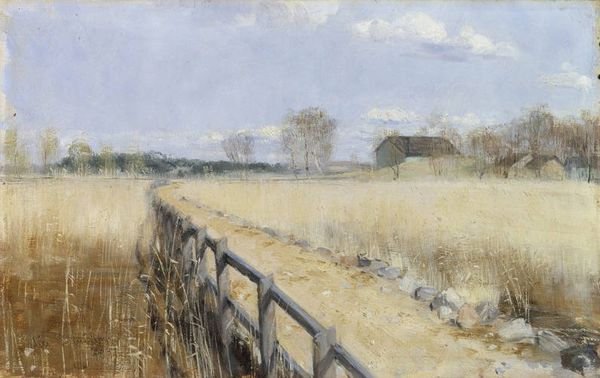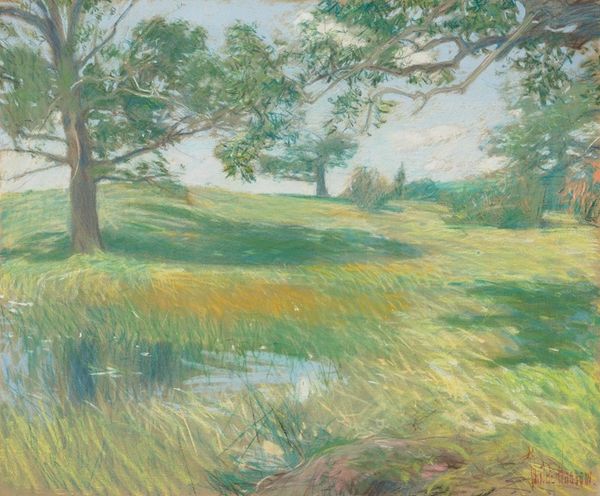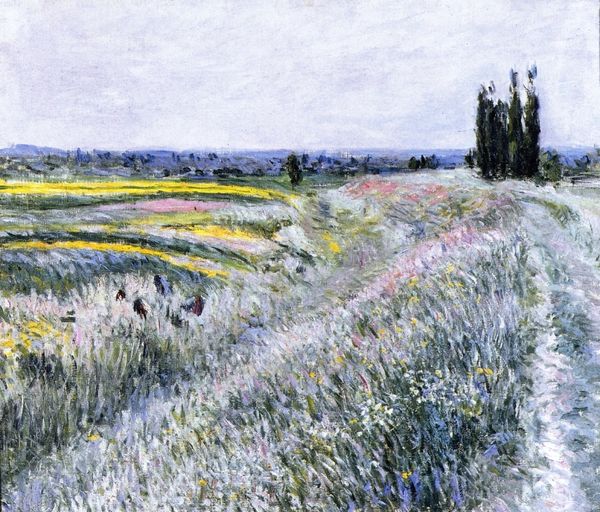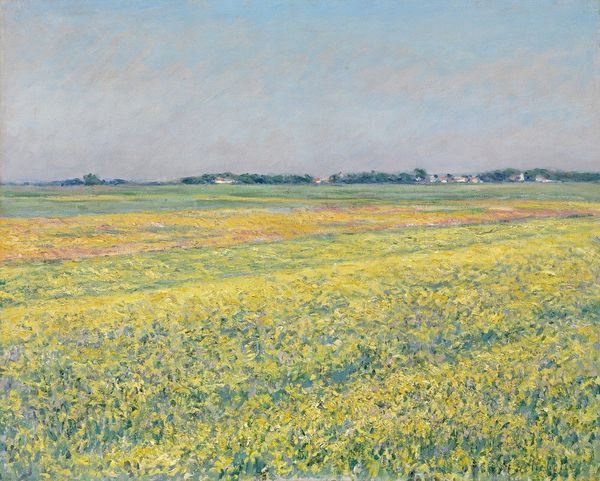
painting, plein-air, oil-paint
#
portrait
#
contemporary
#
painting
#
impressionism
#
plein-air
#
oil-paint
#
landscape
#
figuration
#
cityscape
Copyright: Public domain
Curator: William Merritt Chase's *Shinnecock Hills*, likely painted around 1891, captures a slice of Long Island life en plein air. Editor: It feels incomplete somehow. The rapid brushstrokes lend it a sense of transience, almost as if the scene could dissolve at any moment. The scale, too, contributes to this airy, ethereal quality. Curator: Indeed, Chase’s engagement with Impressionism is palpable. Notice how the broken color creates an optical mixing in the viewer's eye. He’s less concerned with representing a mimetic reality than with capturing the sensory impression of the place. Editor: Considering Shinnecock Hills was, at the time, a popular summer destination for wealthy New Yorkers, is Chase presenting us with a romantic vision of leisure and escape? The lone figure certainly seems disconnected from the labor typically associated with the landscape. Curator: Precisely. Her inclusion activates the flatness of the field while emphasizing perspective through recession. Her very stance implies the picture plane is another constructed space, her form is literally a vanishing point, as her own existence diminishes further in depth. Editor: So, are you suggesting the lady symbolizes some form of social commentary or engagement within Chase's work? Considering her apparent freedom, is she representative of larger discourses during the period concerning leisure? Curator: In terms of pure formalism, that solitary figure adds depth, leading the eye back into the landscape. This creates dynamism and prevents the scene from feeling static. Also, in this compositional design the work uses open form which suggests, again, it's very openness. Editor: Thinking more broadly, one could view this scene within the context of American landscape painting traditions. How does Chase's work fit within broader narratives about representing the American landscape and its relationship to cultural identity during his time? Curator: That reading of identity relies on cultural specificity whereas formal concerns of line, shape, color exist independently of a viewer, yet work together, like visual poetry to give a holistic viewing experience. Editor: Fair enough. Still, I appreciate how the painting opens a window to both a specific time and place and more universal concerns. Curator: Indeed, and I find the work exemplifies visual strategies beyond historical narrative as well. A powerful synthesis.
Comments
No comments
Be the first to comment and join the conversation on the ultimate creative platform.
